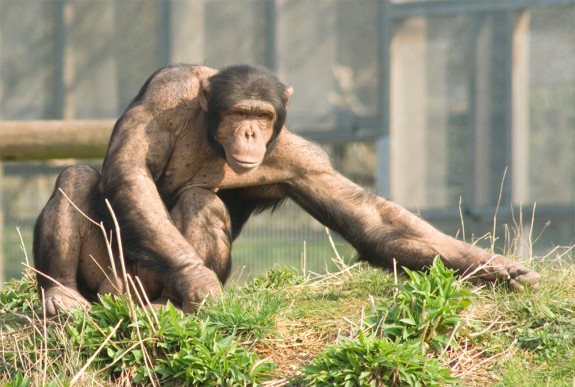The Russian Government Once Funded a Scientist’s Quest To Make an Ape-Human Hybrid
In 1926, a famed Russian biologist was “hell-bent” on creating an ape-human hybrid

A very senior chimpanzee. Photo: Mark Fowler
In 1926, less than a decade after the Russian revolution, Russia’s Bolshevik party—which went on to become the Communist Part of the Soviet Union—was seeking to stamp out religion, a perceived threat to the party’s power. And famed Russian zoologist Ilia Ivanov, an expert in artificial insemination and a man “hell-bent on breeding a creature that was half man, half ape,” knew how to take advantage of that political push, Stephanie Pain wrote in New Scientist a few years ago. Ivanov pitched his pet project to the Russian Academy of Sciences as a way to ‘prove Darwin right’ and “strike a blow against religion.” Supported and financed by the Bolshevik government, Ivanov set off for Africa to catch some chimpanzees and orangutans and, he hoped, to use one to artificially inseminate a human woman.
“If he crossed an ape and a human and produced viable offspring then that would mean Darwin was right about how closely related we are,” says Etkind.
Originally, Ivanov wanted to force the procedure on an unsuspecting woman. Eventually, he had to seek volunteers.
According to Pain, Russia’s scientists disapproved of Ivanov’s quest. But party politics persevered.
Ivanov’s quest for hybridization was not without precedent. Using his mastery of artificial insemination, he had “produced a zeedonk (zebra-donkey hybrid), a zubron (European bison-cow cross) and various combinations of rats, mice, guinea pigs and rabbits. In 1910, he told a gathering of zoologists that it might even be possible to create hybrids between humans and their closest relatives.”
Though the guise of overturning religion was the argument that earned approval for Ivanov’s ethically-dubious research, Pain suggests that the real reason compelling the work may have been even darker.
There is a third possible motive – that Ivanov’s research was part of an ambitious plan to transform society. The high-ranking Bolsheviks who backed Ivanov were intellectuals who saw science as a means of realising their dream of a socialist utopia. “Politicians could change the political system, nationalise industries and turn farms into vast collectives – but the task of transforming people was entrusted to scientists,” says Etkind. “The aim was to match people to the socialist design of Soviet society.”
“One way to do that was through “positive eugenics”, using AI to speed up the spread of desirable traits – a willingness to live and work communally, for instance – and to get rid of “primitive” traits such as competitiveness, greed and the desire to own property. “There were many projects aimed at changing humanity,” Etkind says. “Ivanov’s was the most extreme but if he succeeded then that would show that humans could be changed in radical and creative ways.”
Unfortunately for Ivanov, none of his experiments ever worked. And in the mid-1930s, he was “exiled to Kazakhstan,” with the quest for a human-ape hybrid left unfinished.
More from Smithsonian.com:
Resurrecting the Czar
Animal Hybrids: Ligers and Tigons and Pizzly Bears, Oh My!
/https://tf-cmsv2-smithsonianmag-media.s3.amazonaws.com/accounts/headshot/smartnews-colin-schultz-240.jpg)
/https://tf-cmsv2-smithsonianmag-media.s3.amazonaws.com/accounts/headshot/smartnews-colin-schultz-240.jpg)